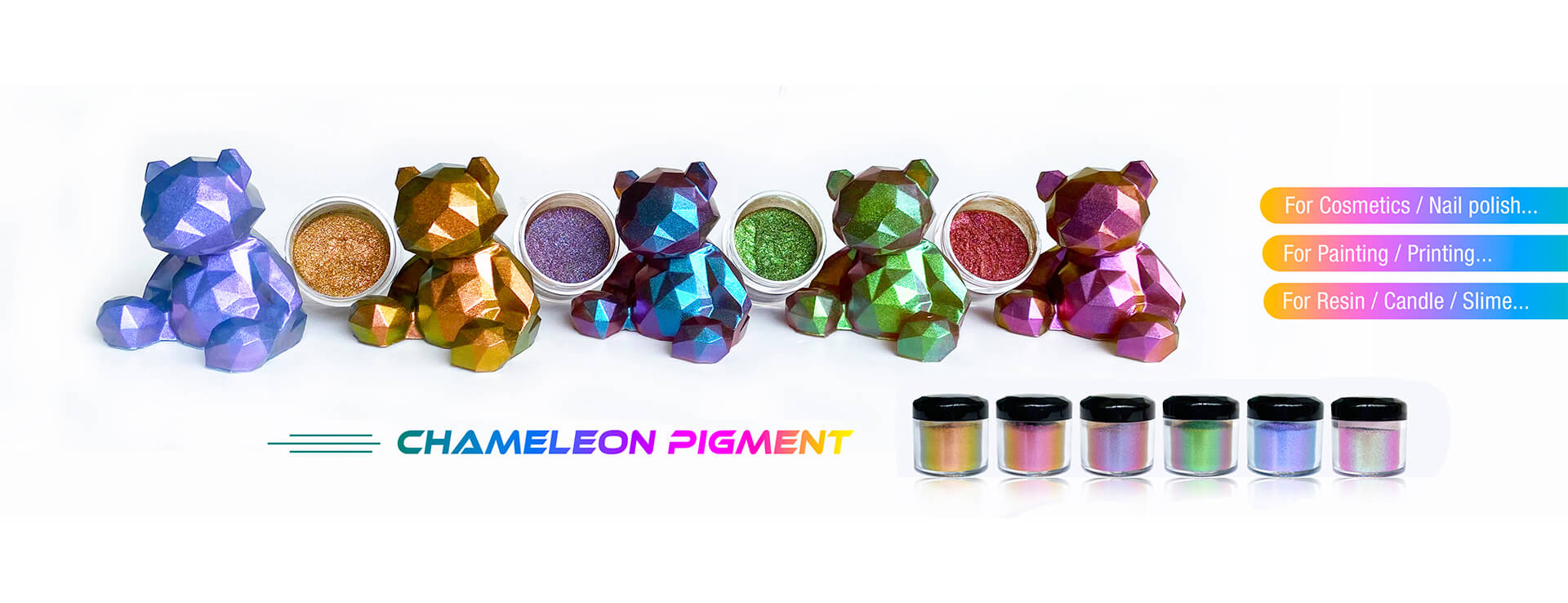Pigments and dyes go hand in hand, and people often confuse them with each other. Pigment is a coloured material that is nearly or entirely insoluble in water. On the other hand, dyes are also coloured material, but they are soluble in water. Pigments are generally divided into three major categories: Organic pigments, Inorganic pigments, Special Effect pigments. When we talk about leading pigment manufactures in the world, we will introduce the 3 pigment categories separately so that you can understand pigment industry more clear.
Special effect pigment:

Special effect pigments mainly include pearlescent pigments and metallic pigments. It is the smallest of the three categories, but the fastest growing in recent years. From 2017 to 2021, its CAGR(compound annual growth rate) is about 5.3%, it is estimated that by 2022 the market demand will reach USD 969.2 Million, and this growth is projected to persist in the coming years as well. Special effect pigments are widely used in paints & coatings, printing inks, plastics, cosmetics, Resin and others, as they supply products enhanced appearance, excellent glitter, shimmer, shine and luster; color changing, mirror reflection effect.
In the world, BASF SE (Germany), Clariant AG (Switzerland), Huntsman Corporation (U.S.), Altana AG (Germany), Merck KGaA (Germany) are leading manufactures. It is worth noting that Asia-Pacific is the largest special effect pigments market. The high speed rising demand in this region is mainly driven by increased demands in the cosmetics, packaging, and household goods industries. Based on this situation, the development of Chinese special effect pigment manufacturers is very rapid. They can quickly supply the local area and the Asia-Pacific region at economic price. Especially since the outbreak of the COVID-19 epidemic, due to China's good control of the epidemic, the effect pigment supply from Chinese manufactures is more stable and reliable.

(Full name Shanghai Orcheer Material Technology Co., Ltd.) is a reliable Chinese pigment Manufacturer focusing on the research, development, production, application, and sales of special effect pigments. Its production and application factories are located in Zhejiang and Jiangsu province; the domestic sales and service department is located in Wenzhou city; the International sales and service center is located in Shanghai. This company can bring to you more than 10 years of experience in R&D, manufacture, application of special effect pigments for different industries.
Its comprehensive product portfolio:
• Pearlescent pigment (Mica powder / Pearl pigment / Metallic pigment)
• Optical chameleon pigment (Optical variable pigment / Color change pigment)
• Glitter powder (PET glitter)
• Luminous pigment (Glow in the dark powder)
• Fluorescent pigment (Neon pigment powder)
• Water-based aluminium paste
• Bronze powder (Copper gold powder)
• Holographic pigment powder
• 3D-9D magnetic pigment powder
Its main focus encompasses:
1. Makeup / Cosmetic pigment
2. Nail polish / Nail gel / Nail art pigment
3.Epoxy resin / Epoxy floor / Resin crafts pigment.
4. Surface treatment pigment ( for automobiles, ornaments industries, etc.)
5. DIY pigment kit (for handmade soap, Slime, candles, greeting cards, Calligraphy, painting, decoration, etc.)
Inorganic pigment
Inorganic pigments are pigments whose main components are inorganic substances, generally oxides of non-ferrous metals, or some metal salts. Inorganic pigments are divided into natural inorganic pigments and artificial inorganic pigments. Natural inorganic pigments are mineral pigments, usually low in purity and dark in color, but they are inexpensive. The synthetic inorganic pigments have complete chromatograms, bright and pure colors, and strong hiding power.
Titanium dioxide, Iron Oxide, Carbon Black are the most-widely used inorganic pigments. The market for inorganic pigments is expected to grow from USD 22.0 billion in 2019 to USD 28.3 billion by 2024, at a CAGR of 5.1%. As the good performance of heat stability, chemical inertness, durability, and weather resistance, inorganic pigments are in huge demand in the building & construction, automotive, paper & printing, textiles, industries, and are on a steady rise.
The leading suppliers in the inorganic pigments market are:
Venator (UK)
The Chemours Company (US)
Tronox Limited (US)
LANXESS (Germany)
Kronos Worldwide, Inc. (US),
Cathay Industries (China),
Clariant (Switzerland)
Ferro Corporation (US)
Heubach GmbH (Germany)
Lomon Billions (China)
Organic Pigment
Organic pigments are insoluble organic substances, which are usually added to the substrate in a highly dispersed state to color the substrate. But it is neither soluble in the medium in which they are used, nor in the colored substrate. Common inorganic pigments include azo pigments, lakes, phthalocyanine pigments, quinacridone pigments, etc.
Organic pigments are widely used in the coloring of inks, paints, coatings, and synthetic fibers, as well as the pigment printing of fabrics, the coloring of plastics, rubber, and leather.
The organic pigments market is projected to grow from USD 5.5 billion in 2021 to USD 6.7 billion by 2026. At 2021, the printing inks application accounted for a share of 36.4% in terms of value in the organic pigments market. According to analysis, the paints and coating application will be the fastest growing, with a CAGR of 4.5% from 2021 to 2026.
APAC is the most lucrative organic pigments market. The growing demand for organic pigments and regulations on the use of environment-friendly products have led to the market growth. Organic pigment manufacturers are targeting this region, as it is the strongest regional market for industries such as textiles, plastics, and construction. China is the leading producer and consumer of organic pigments in APAC.
The leading Manufactures in global organic pigment market are:
BASF (Germany)
Clariant (Switzerland)
DIC Corporation (Japan)
Heubach GmbH (Germany)
Sudarshan Chemical Industries Ltd. (India)
Ferro Corporation (US)




Comments